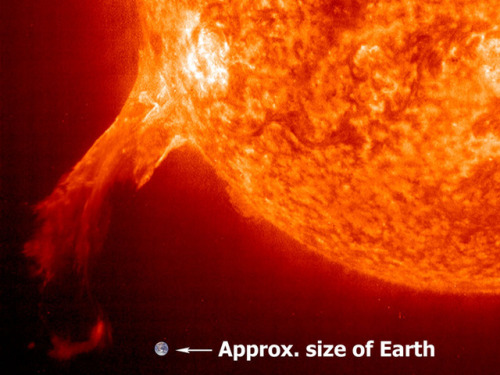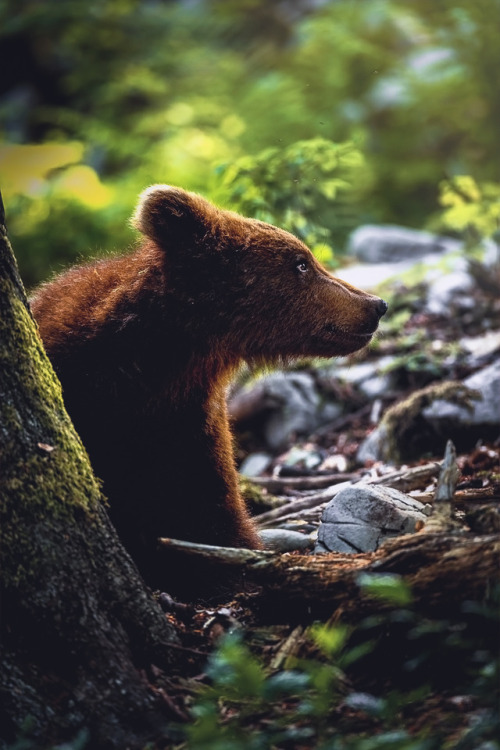Outward Bound: Interplanetary Trade
Outward Bound: Interplanetary Trade
More Posts from Knowledgeiskeyuk and Others




Pop.Up, 2017, by Airbus and Italdesign. A concept for an autonomous multi-modal transportation system

Cambridge University scientists have identified a chemical in the brain that blocks unwanted thoughts, offering a new avenue to treat neurological disorders. http://ift.tt/2lXzefU
Are We Alone In The Universe?

An Erupting Solar Prominence from SOHO
Credit: SOHO-EIT Consortium, ESA, NASA



Surprisingly erratic X-ray auroras discovered at Jupiter
ESA and NASA space telescopes have revealed that, unlike Earth’s polar lights, the intense auroras seen at Jupiter’s poles unexpectedly behave independently of one another.
Auroras have been seen in many places, from planets and moons to stars, brown dwarfs and a variety of other cosmic bodies. These beautiful displays are caused by streams of electrically charged atomic particles – electrons and ions – colliding with the atmospheric layers surrounding a planet, moon or star. Earth’s polar lights tend to mirror one another: when they brighten at the North pole, they generally brighten at the South pole, too.
The same was expected of auroras elsewhere, but a new study, published today in Nature Astronomy, reveals that those at the gas giant Jupiter are much less coordinated.
The study used ESA’s XMM-Newton and NASA’s Chandra X-ray space observatories to observe the high-energy X-rays produced by the auroras at Jupiter’s poles. While the southern auroras were found to pulse consistently every 11 minutes, those at the planet’s north pole flared chaotically.
“These auroras don’t seem to act in unison like those that we’re often familiar with here on Earth,” says lead author William Dunn of University College London’s Mullard Space Science Laboratory, UK, and Harvard-Smithsonian Center for Astrophysics, USA.
“We thought the activity would be coordinated through Jupiter’s magnetic field, but the behaviour we found is really puzzling.
“It’s stranger still considering that Saturn – another gas giant planet – doesn’t produce any X-ray auroras that we can detect, so this throws up a couple of questions that we’re currently unsure how to answer.
“Firstly, how does Jupiter produce bright and energetic X-ray auroras at all when its neighbour doesn’t, and secondly, how does it do so independently at each pole?”
With the data at hand, William and colleagues identified and mapped X-ray hot spots at Jupiter’s poles. Each hot spot covers an area half the size of Earth’s surface.
As well as raising questions about how auroras are produced throughout the cosmos, Jupiter’s independently pulsing auroras suggest that there is far more to understand about how the planet itself produces some of its most energetic emissions.
Jupiter’s magnetic influence is colossal; the region of space over which the Jovian magnetic field dominates – the magnetosphere – is some 40 times larger than Earth’s, and filled with high-energy plasma. In the outer edges of this region, charged particles ultimately from volcanic eruptions on Jupiter’s moon, Io, interact with the magnetic boundary between the magnetosphere and interplanetary space. These interactions create intense phenomena, including auroras.
“Charged particles have to hit Jupiter’s atmosphere at exceptionally fast speeds in order to generate the X-ray pulses that we’ve seen. We don’t yet understand what processes cause this, but these observations tell us that they act independently in the northern and southern hemispheres,” adds Licia Ray, from Lancaster University, UK, and a co-author.
The asymmetry in Jupiter’s northern and southern lights also suggests that many cosmic bodies that are known to experience auroras – exoplanets, neutron stars, brown dwarfs and other rapidly-rotating bodies – might produce a very different aurora at each pole.
Further studies of Jupiter’s auroras will help to form a clearer picture of the phenomena produced at Jupiter; auroral observing campaigns are planned for the next two years, with X-ray monitoring by XMM-Newton and Chandra and simultaneous observations from NASA’s Juno, a spacecraft that started orbiting Jupiter in mid-2016.
ESA’s Juice will arrive at the planet by 2029, to investigate Jupiter’s atmosphere and magnetosphere. It, too, will observe the auroras and in particular the effect on them of the Galilean moons.
“This is a breakthrough finding, and it couldn’t have been done without ESA’s XMM-Newton,” adds Norbert Schartel, ESA project scientist for XMM-Newton.
“The space observatory was critical to this study, providing detailed data at a high spectral resolution such that the team could explore the vibrant colours of the auroras and figure out details about the particles involved: if they’re moving fast, whether they’re an oxygen or sulphur ion, and so on.
“Coordinated observations like these, with telescopes such as XMM-Newton, Chandra and Juno working together, are key in exploring and further understanding environments and phenomena across the Universe, and the processes that produce them.”

Will your job still exist tomorrow, or will it be automated? Here are some of the top “at risk” jobs.
Robot driver coming soon!

Imagine Taking an Uber with a Robot Driver. We’re Not Far Off http://futurism.com/imagine-taking-an-uber-with-a-robot-driver-were-not-far-off/?utm_campaign=coschedule&utm_source=tumblr&utm_medium=futurismnews&utm_content=Imagine%20Taking%20an%20Uber%20with%20a%20Robot%20Driver.%20We%27re%20Not%20Far%20Off

Slovenian Bear By Cedrik Strahm
Develop a passion for learning. If you do, you will never cease to grow.
Anthony J. D'Angelo
It takes the American beaver 24 hours to learn to swim after being born. Learn more about beavers and how they shape the world around them.
-
 knowledgeiskeyuk reblogged this · 7 years ago
knowledgeiskeyuk reblogged this · 7 years ago -
 aegeus-greekaegeansevresjuly1920 reblogged this · 7 years ago
aegeus-greekaegeansevresjuly1920 reblogged this · 7 years ago -
 aegeus-greekaegeansevresjuly1920 liked this · 7 years ago
aegeus-greekaegeansevresjuly1920 liked this · 7 years ago -
 incendiaryfisher24 liked this · 7 years ago
incendiaryfisher24 liked this · 7 years ago -
 atrumdeus reblogged this · 7 years ago
atrumdeus reblogged this · 7 years ago -
 therdwins-blog liked this · 7 years ago
therdwins-blog liked this · 7 years ago -
 thecoupe-intheskyyy-blog reblogged this · 7 years ago
thecoupe-intheskyyy-blog reblogged this · 7 years ago -
 samantha-irondreams-blog reblogged this · 7 years ago
samantha-irondreams-blog reblogged this · 7 years ago -
 impossiblynecessary liked this · 7 years ago
impossiblynecessary liked this · 7 years ago -
 butch-errant liked this · 7 years ago
butch-errant liked this · 7 years ago -
 hugsfromhugo liked this · 7 years ago
hugsfromhugo liked this · 7 years ago -
 intensitae liked this · 7 years ago
intensitae liked this · 7 years ago -
 furiously-queer liked this · 7 years ago
furiously-queer liked this · 7 years ago -
 minotaurconnoisseur liked this · 7 years ago
minotaurconnoisseur liked this · 7 years ago -
 harmonyltd reblogged this · 7 years ago
harmonyltd reblogged this · 7 years ago -
 harmonyltd liked this · 7 years ago
harmonyltd liked this · 7 years ago -
 space--bot liked this · 7 years ago
space--bot liked this · 7 years ago -
 nodaudaboutitt liked this · 7 years ago
nodaudaboutitt liked this · 7 years ago -
 readinglist32 liked this · 7 years ago
readinglist32 liked this · 7 years ago -
 the960writers reblogged this · 7 years ago
the960writers reblogged this · 7 years ago -
 youngvisionarykings liked this · 7 years ago
youngvisionarykings liked this · 7 years ago -
 gutsmear420 liked this · 7 years ago
gutsmear420 liked this · 7 years ago -
 onerifle liked this · 7 years ago
onerifle liked this · 7 years ago -
 onerifle reblogged this · 7 years ago
onerifle reblogged this · 7 years ago -
 cosmoscenti liked this · 7 years ago
cosmoscenti liked this · 7 years ago -
 frankylucky1302 liked this · 7 years ago
frankylucky1302 liked this · 7 years ago -
 maudlinsolus liked this · 7 years ago
maudlinsolus liked this · 7 years ago -
 diseonfire reblogged this · 7 years ago
diseonfire reblogged this · 7 years ago -
 proudsharkapologist liked this · 7 years ago
proudsharkapologist liked this · 7 years ago -
 spaceexp reblogged this · 7 years ago
spaceexp reblogged this · 7 years ago
"Develop a passion for learning. If you do, you will never cease to grow." Anthony J. D'Angelo. Visit our website at https://knowledgeiskey.co.uk
66 posts